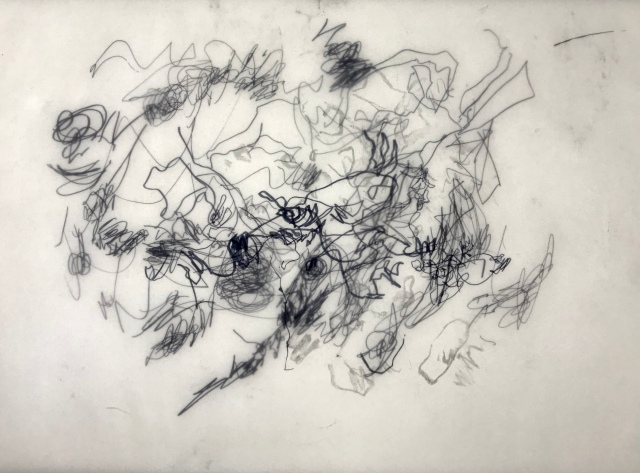
In 2015 I developed ‘Inefficient Mapping’ as a methodologic protocol that could work with the explosion of scholarly work using speculative, immanent, and critical theories. As an artist I understood the potential of drawing in being able to activate these theories into a methodologic practice across a diverse range of projects.
I brought arts practices and theory together through critical creative praxis to visually articulate concepts and ideas embedded in speculative, immanent, and critical theories. Inefficient mapping uses mapping techniques and drawing strategies as a geontologic practice for theorizing on the world.
Inefficient mappings are created from gestural, drawn markings that are created in situ. The maps are produced while still, or while walking and moving. The mappings record affective relations within the milieu, in ways that do not emanate from the human but through ethically entangling with, observing, and modestly witnessing (Haraway, 2004) the already-movements of matter and/in spaces.
The mappings are inefficient because trying to capture lively movements in entirety is impossible and futile. Partial recordings, or what Dennis Wood (2013) terms the “inefficient map” (maps that do not attempt to include everything but focus on aspects) can record such things as affects and the diverse pedagogical happenings that take place through the interactions and interactivities of matters, times, movements, spaces, and scales.
Inefficient mapping is a non-representational account of the milieu, from noticing some of what goes on. Inefficient mapping does not claim to represent a truthful or whole account of the time-place. The graphic orientation of the inefficient mappings allows for visual notation of schizo activity: the overlapping, simultaneous, and multiple movements, forms, and elements that are occurring irrespective of human presence.